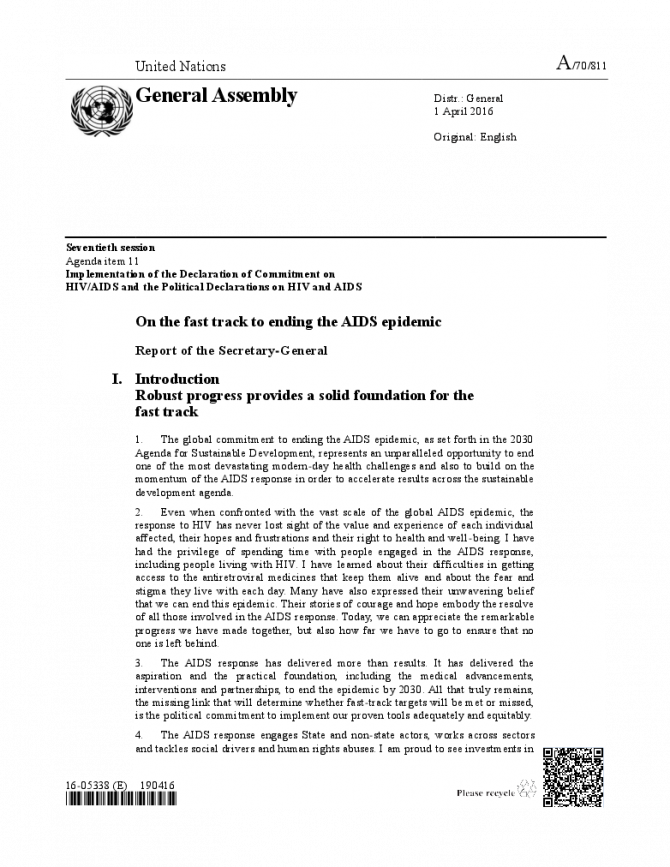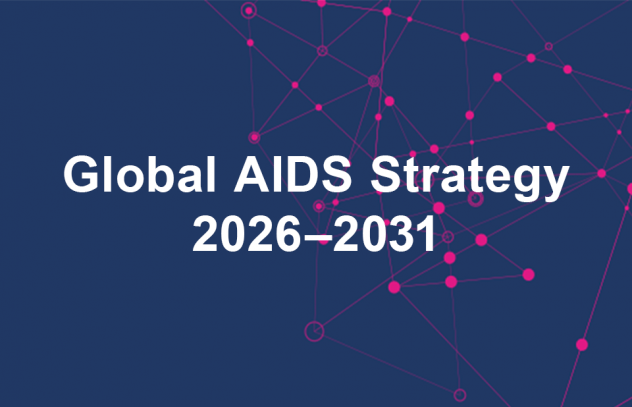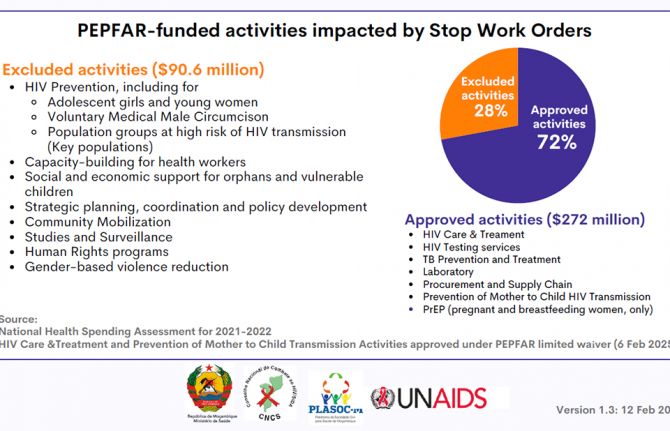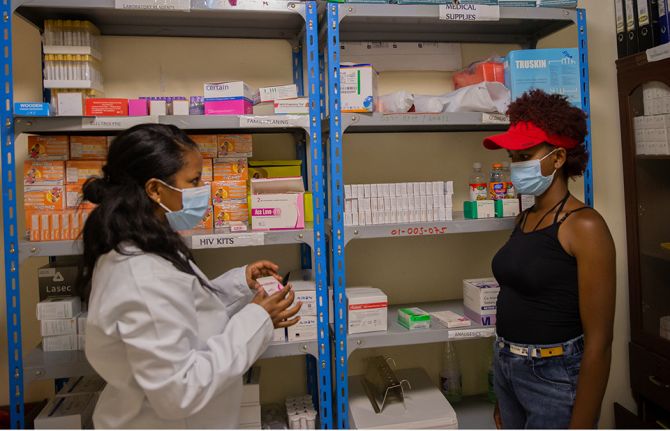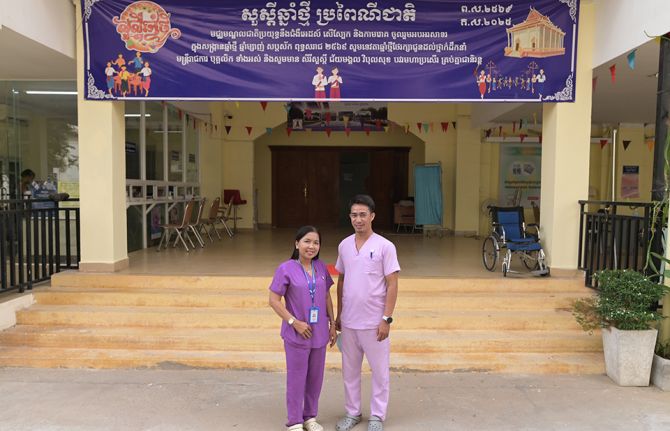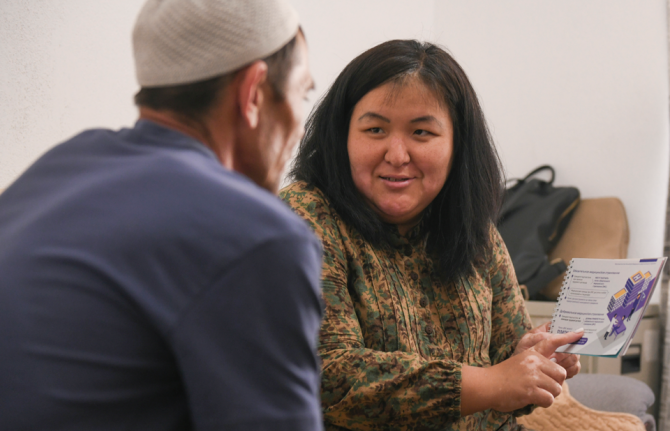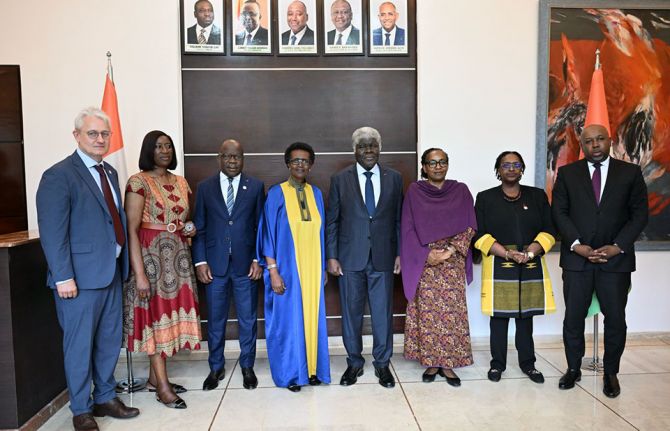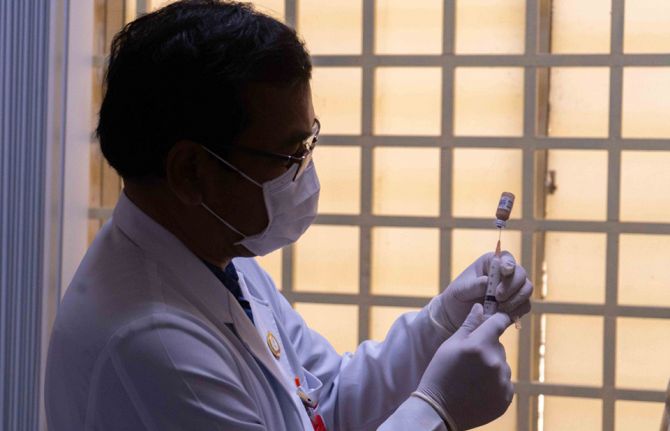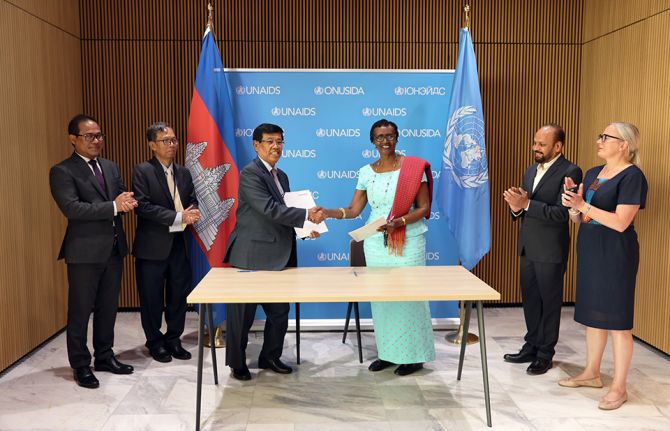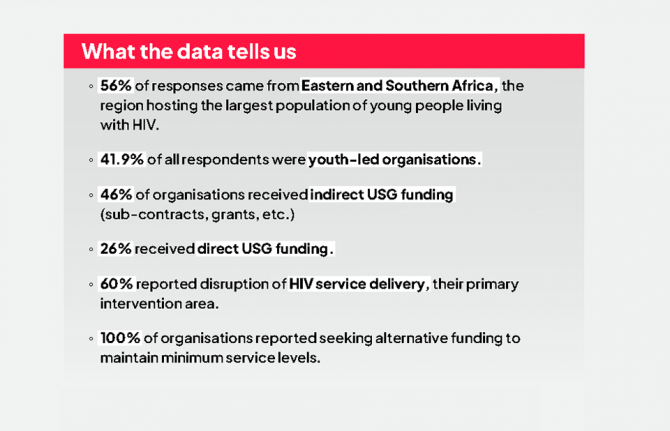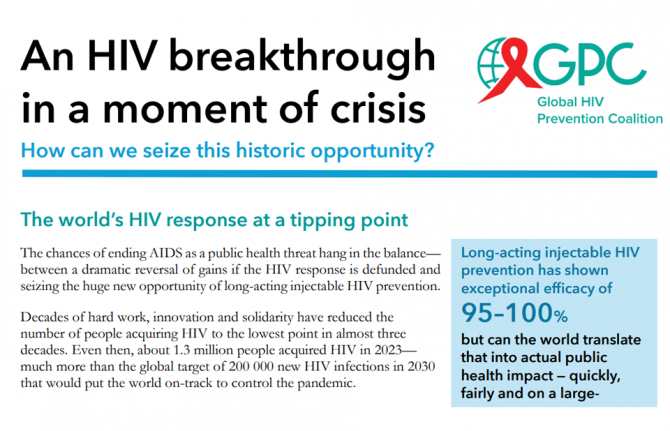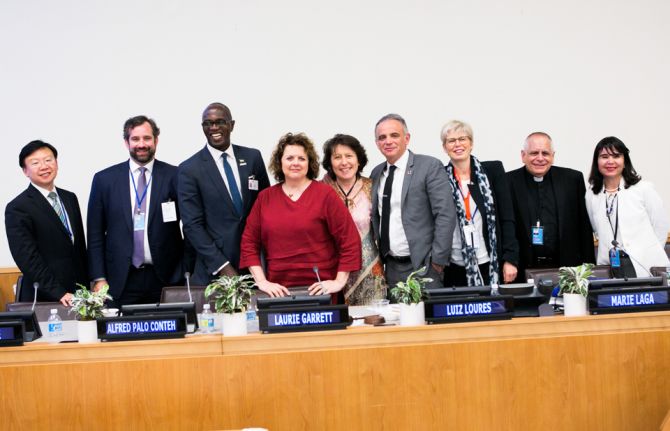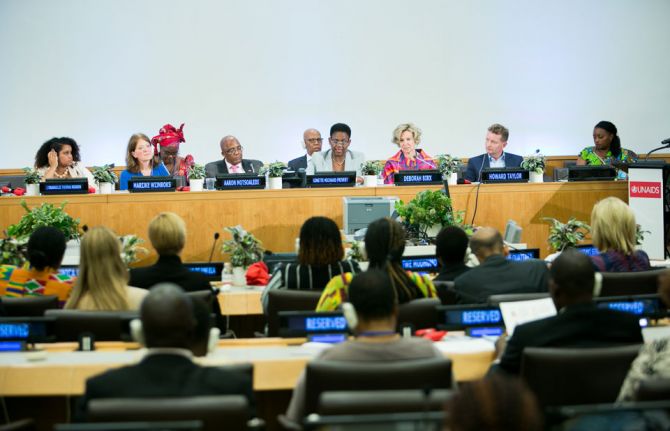Documents
Report of the Secretary-General
09 May 2016
The high-level meeting on HIV/AIDS, to be held in June 2016 by the General Assembly (see resolution 70/228) is a pivotal occasion to rally global commitment to the fast-track targets and core actions for ending AIDS by 2030, as outlined in the UNAIDS 2016-2021 Strategy, “On the Fast-Track to end AIDS”. It provides the opportunity to build on the lessons learned from the AIDS response and to work with the people, institutions and networks that sustain it, to truly advance a paradigm shift to the integrated development approach envisioned in the Sustainable Development Goals. Together we can achieve success, measured by the assurance of people’s health, human rights, dignity and ability to thrive in the long term.

Press Release
New report shows that urgent action is needed to end the AIDS epidemic by 2030
06 May 2016 06 May 2016New report from the United Nations Secretary-General warns that major gains could be lost if action does not accelerate over the next five years and urges countries to react by front-loading investments and increasing action
NEW YORK, 06 May 2016—A new report released by the United Nations Secretary-General, Ban Ki-moon, warns that the AIDS epidemic could be prolonged indefinitely if urgent action is not implemented within the next five years. The report, On the Fast-Track to end the AIDS epidemic, reveals that the extraordinary acceleration of progress made over the past 15 years could be lost and urges all partners to concentrate their efforts to increase and front-load investments to ensure that the global AIDS epidemic is ended as a public health threat by 2030.
“The AIDS response has delivered more than results. It has delivered the aspiration and the practical foundation to end the epidemic by 2030,” said Mr Ban in the report. “But if we accept the status quo unchanged, the epidemic will rebound in several low- and middle-income countries. Our tremendous investment, and the world’s most inspiring movement for the right to health, will have been in vain.”
The review of progress looks at the gains made, particularly since the 2011 United Nations Political Declaration on HIV and AIDS, which accelerated action by uniting the world around a set of ambitious targets for 2015. “The progress made has been inspiring,” said Mr Ban in the report. “Reaching 15 million people with antiretroviral therapy nine months before the December 2015 deadline is a major global victory.” The report outlines that the rapid treatment scale-up has been a major contributing factor to the 42% decline in AIDS-related deaths since the peak in 2004 and notes that this has caused life expectancy in the countries most affected by HIV to rise sharply in recent years.
The report underlines the critical role civil society has played in securing many of the gains made and the leadership provided by people living with HIV. Community efforts have been key to removing many of the obstacles faced in scaling up the AIDS response, including reaching people at risk of HIV infection with HIV services, helping people to adhere to treatment and reinforcing other essential health services.
A major area of success has been in reducing new HIV infections among children. In 2011 UNAIDS and partners launched the Global Plan towards the elimination of new HIV infections among children by 2015 and keeping their mothers alive at the UN General Assembly High-level meeting on AIDS and in just five years, from 2009 to 2014, new HIV infections have been halved in the countries that account for 90% of all pregnant women living with HIV. Some around 85 countries are now poised to virtually eliminate new HIV infections among children.
In the report, however, Mr Ban also calls the shortfalls in the implementation of the 2011 Political Declaration on HIV and AIDS distressing, revealing that even as new HIV prevention tools and approaches have emerged, HIV prevention programmes have weakened in recent years owing to inadequate leadership, weak accountability and declining funding. He notes that new HIV infections declined by just 8% between 2010 and 2014.
The report draws attention to regions where new HIV infections are continuing to rise—eastern Europe and central Asia, where new HIV infections rose by 30% between 2000 and 2014, mostly among people who inject drugs, the Middle East and North Africa and the Asia–Pacific region.
It notes that gender norms that perpetuate inequality continue to prevail across many societies and that girls and young women remain particularly affected by HIV. Of the 2.8 million young people aged 15–24 years living with HIV in sub-Saharan Africa, 63% were female.
The report highlights that despite the progress made on expanding access to antiretroviral therapy, around 22 million people still do not have access to treatment. The report attributes the most substantial barrier to scaling up HIV treatment as late diagnosis, highlighting that around half of all people living with HIV are unaware of their HIV status—this underscores the urgency of increasing access to HIV testing, particularly for people at higher risk of infection.
Despite the challenges outlined in the report, it does offer substantial hope for the future, stating that if the world can alter the status quo, the AIDS epidemic can be ended as a public health threat by as soon as 2030. To do this, the report outlines that the response needs to be inclusive, accessible and grounded in human rights and that it must focus on scaling up services for the people and places most in need. The report also emphasizes the necessity of repealing punitive laws and repressive policies that criminalize same-sex sexual relations, people who use drugs and sex workers, since they impede access to services.
“We must reinforce rights-based approaches, including those that foster gender equality and empower women,” said Mr Ban in the report. “Access to services must be ensured for the people most affected, marginalized and discriminated against including people living with HIV, young women and their sexual partners in sub-Saharan Africa, children and adolescents everywhere, and gay men and other men who have sex with men, sex workers and their clients, people who inject drugs, transgender people, people in prison, people with disabilities, migrants and refugees.”
The report gives strong emphasis to the links between the response to HIV and the success of the Sustainable Development Goals (SDGs), underlining the strong links to SDG 3 (ensure healthy lives and promote well-being for all), SDG 5 (achieve gender equality and empower women and girls), SDG 10 (reduce inequality in access to services and commodities), SDG 16 (promote just, peaceful and inclusive societies) and SDG 17 (revitalize the partnership for sustainable development).
The report notes that the scale-up of resources in recent years has been a strong driving force behind the progress made in responding to HIV. It estimates that in 2014 US$ 19.2 billion was available in low- and middle-income countries for the response to HIV and that by 2020 resources need to increase to an estimated US$ 26.2 billion to achieve the 2030 target of ending the AIDS epidemic.
The report urges countries to embrace the UNAIDS Fast-Track approach to ending the AIDS epidemic, which will require reaching an ambitious set of goals by 2020, including reducing the numbers of people newly infected with HIV and people dying from AIDS-related causes to fewer than 500 000 per annum and eliminating HIV-related discrimination. Targets to reach these goals include reaching the 90–90–90 treatment target for 2020, which calls for 90% of people living with HIV to know their status, 90% of people who know their HIV-positive status to access treatment and 90% of people on treatment to have suppressed viral loads.
Resources
Press centre
Download the printable version (PDF)

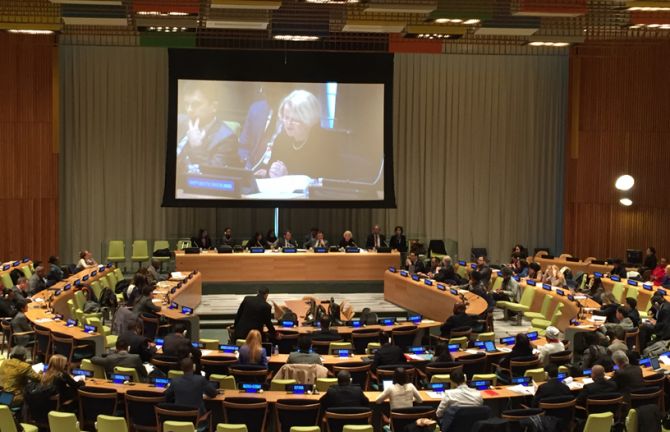
Update
Bold Political Declaration needed from June High-Level Meeting on Ending AIDS
12 April 2016
12 April 2016 12 April 2016On 8 April, the President of the United Nations General Assembly, Mogens Lykketoft, convened an informal session to brief United Nations Member States on the 2016 United Nations General Assembly High-Level Meeting on Ending AIDS, which will take place in New York, United States of America, from 8 to 10 June 2016.
During the session, the Deputy Executive Director of UNAIDS, Jan Beagle, presented the United Nations Secretary-General’s report, On the Fast-Track to end the AIDS epidemic. The report highlights that ending the AIDS epidemic is possible by 2030, but only if a Fast-Track approach is taken over the next five years. United Nations Member States welcomed the report and expressed strong support for efforts to Fast-Track the response and end the AIDS epidemic as part of the Sustainable Development Goals.
The session was presided over by the President of the General Assembly and the two co-facilitators of the High-Level Meeting on Ending AIDS—Patricia Mwaba Kasese-Bota, Permanent Representative of Zambia to the United Nations, and Jürg Lauber, Permanent Representative of Switzerland to the United Nations.
Representatives of 115 Member States attended the session, many at ambassadorial level. The participants highlighted the need to adopt a bold Political Declaration on Ending AIDS, stating that it would be essential to enabling a Fast-Track approach.
The President of the General Assembly also briefed Member States on the Informal Interactive Civil Society Hearing, which took place on 6 April, and called on Member States to extend full support to civil society participation at the High-Level Meeting on Ending AIDS. He also stressed that the meeting provided a critical opportunity to end the AIDS epidemic in the context of the 2030 Agenda for Sustainable Development.
Dr Kasese-Bota closed the meeting by noting that she and her fellow co-facilitator are extremely encouraged by Member States’ expressions of support. Feedback from this meeting and from the civil society hearing will be used to inform the zero draft of the United Nations Political Declaration on Ending AIDS.
Quotes
“The upcoming High-Level Meeting on Ending AIDS is a critical opportunity to set targets for an integrated response to end AIDS and advance progress towards the Sustainable Development Goals.”
Resources
Related

Update
Zero draft 2016 Political Declaration released ahead of High-Level Meeting on Ending AIDS
19 April 2016
19 April 2016 19 April 2016The co-facilitators of the 2016 United Nations General Assembly High-Level Meeting on Ending AIDS, Patricia Mwaba Kasese-Bota, Permanent Representative of Zambia to the United Nations, and Jürg Lauber, Permanent Representative of Switzerland to the United Nations, have released the zero draft of the 2016 Political Declaration: on the Fast-Track to end AIDS in the age of sustainable development.
The zero draft reflects on the achievements made so far in the response to AIDS. It also sets out a clear agenda to Fast-Track the response by 2020 and put the world on track to end the AIDS epidemic as a public health threat by 2030.
The zero draft was presented to United Nations Member States on 18 April. The co-facilitators will begin open, transparent and inclusive informal consultations on the draft declaration on 25 April. Member States will negotiate and finalize the declaration over the next few weeks, which will be then be presented for adoption at the High-Level Meeting on Ending AIDS on 8 June. The co-facilitators will also hold an informal meeting with civil society, the private sector and other relevant stakeholders on 26 April, which will be webcast live at http://webtv.un.org/live/.
The United Nations General Assembly High-Level Meeting on Ending AIDS will take place in New York, United States of America, from 8 to 10 June. It will bring together high-level representatives of United Nations Member States, people living with HIV, civil society, the private sector and other partners to focus the world’s attention on the importance of a Fast-Track approach to the AIDS response over the next five years. The Political Declaration adopted at the meeting will guide and monitor the AIDS response towards ending the AIDS epidemic by 2030.
Feedback and comments on the zero draft can be made by email to the International Council of AIDS Service Organizations at HLM2016@icaso.org, by no later than Friday, 22 April.
High-Level Meeting on Ending AIDS
Related
Documents
Zero draft 2016 Political Declaration
19 April 2016
Feedback and comments on the zero draft can be made by email to the International Council of AIDS Service Organizations at HLM2016@icaso.org, by no later than Friday, 22 April.

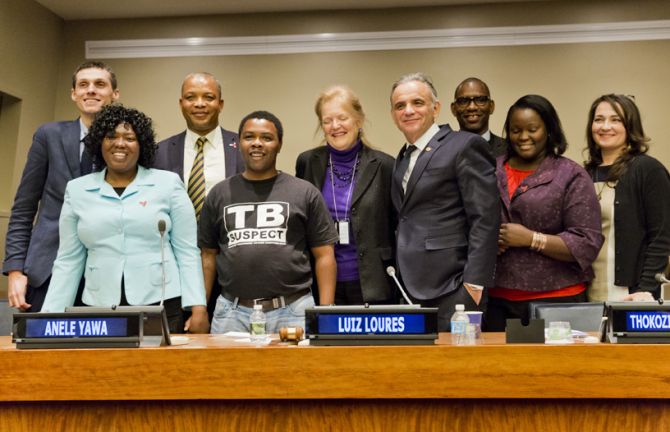
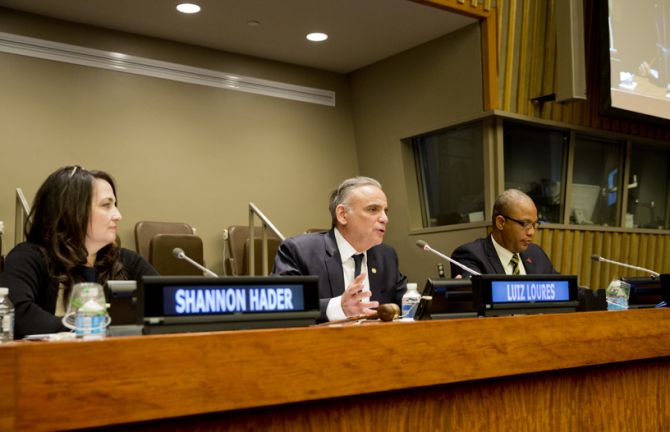
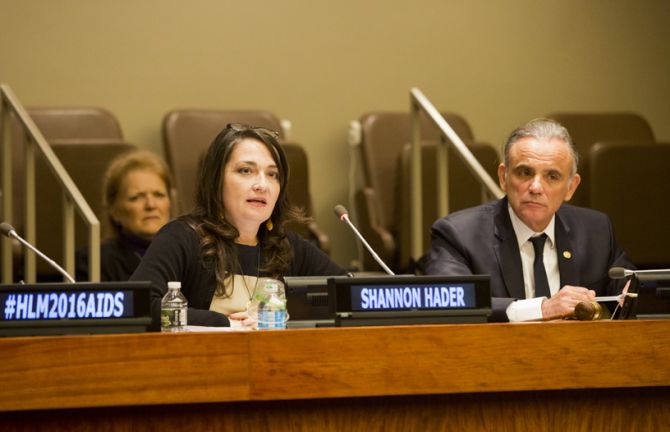
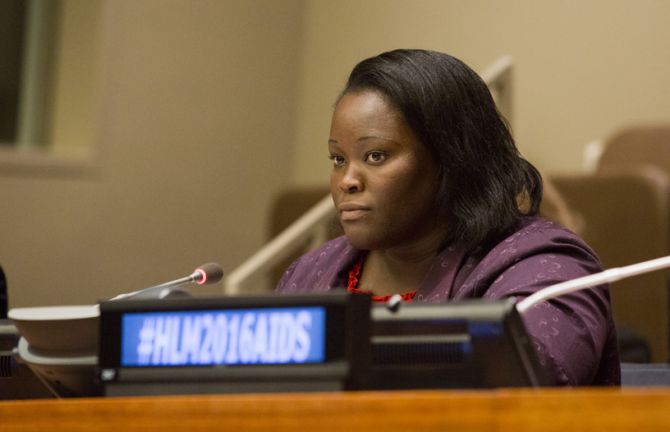
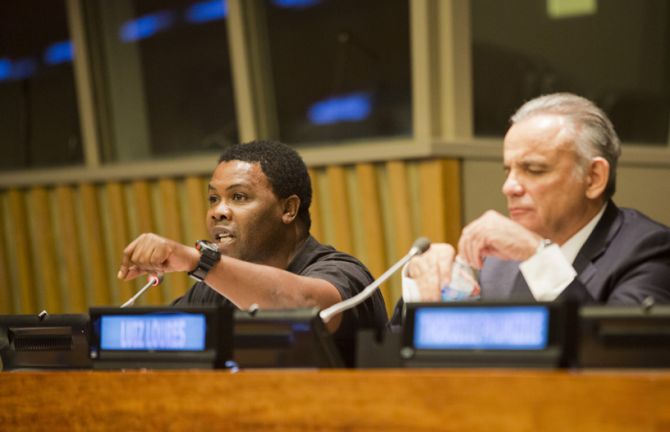
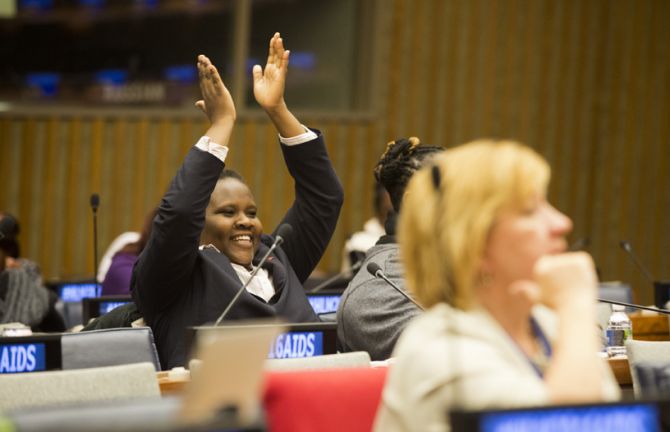
Update
Uniting communities to end the epidemics of AIDS and tuberculosis
07 April 2016
07 April 2016 07 April 2016UNAIDS and the Stop TB Partnership have hosted an interactive discussion in New York, United States of America, with representatives of civil society organizations and other stakeholders involved in the response to HIV and tuberculosis (TB). The discussion took place during the Informal Interactive Civil Society Hearing held by the President of the United Nations General Assembly in preparation for the United Nations General Assembly High-Level Meeting on Ending Aids, which will take place in New York from 8 to 10 June.
During the discussion, the participants described the challenges posed by the epidemics and explored ideas to better integrate the responses. UNAIDS and the Stop TB Partnership have both set ambitious five-year targets to respond to the epidemics and to set the world on course to end them as part of the Sustainable Development Goals.
The UNAIDS 2016–2021 Strategy has established a set of three people-centred goals and 10 measurable targets that must be met by 2020 to end the AIDS epidemic by 2030, including achieving the 90–90–90 treatment target for 2020, whereby 90% of people living with HIV know their HIV status, 90% of people who know their HIV-positive status are accessing antiretroviral treatment and 90% of people on treatment have suppressed viral loads. Other targets include reducing new HIV infections to fewer than 500 000 per year by 2020 and achieving zero HIV-related discrimination.
The Global Plan to End TB is the Stop TB Partnership’s five-year plan to accelerate the response to TB, and includes a projected investment scale-up from 2016 to 2020 to reach a 90–(90)–90 target. This includes reaching at least 90% of all people diagnosed with TB and enabling them to have access to appropriate therapy as required, reaching at least 90% of key populations living with tuberculosis and achieving 90% treatment success for all people diagnosed with tuberculosis.
Prevention of HIV and tuberculosis will also play a key part in ending both epidemics.
Tuberculosis is a major cause of mortality among people living with HIV and is currently responsible for one in three AIDS-related deaths.
Quotes
“There is no end to AIDS if we don’t solve the challenge of coinfection with tuberculosis. There is no option here for a silo approach.”
“We are standing at a global crossroads for HIV and tuberculosis. We know we will never end tuberculosis by 2030 unless we end AIDS by 2030. Likewise, we have no chance to end AIDS by 2030 if we don’t drastically change our response to tuberculosis.”
“I am from Ukraine, which has the fifth highest burden of multidrug-resistant tuberculosis in the world. The cause of death for 60% of HIV-positive people in Ukraine is tuberculosis. Some of them were my friends.”
“The fact that tuberculosis claimed three lives in my family makes me angry—my father, my mother and my brother. When there is a cure and when it is preventable, people should not be dying. Our approach to this disease is wrong.”
“Tuberculosis and HIV are like a brother and sister. We cannot separate them.”
Related

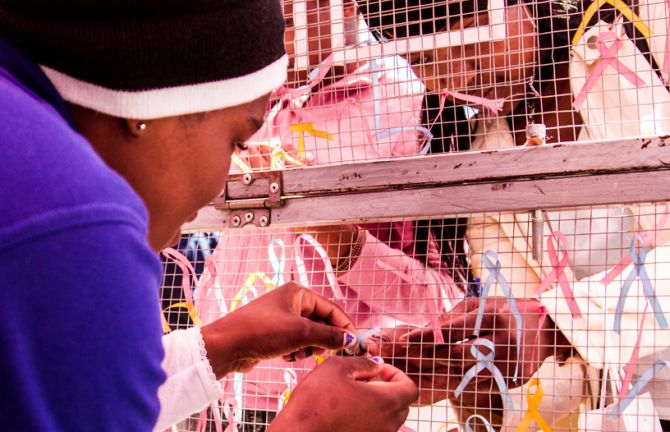
Feature Story
Investing in community advocacy and services to end the AIDS epidemic
04 April 2016
04 April 2016 04 April 2016Since the start of the AIDS epidemic civil society has been at the forefront of the response to HIV—demanding access to treatment and HIV services, calling for the respect of human rights and supporting community-led HIV services.
Today the role of civil society remains more relevant than ever as the success of community efforts in providing HIV services, particularly to key populations, is becoming more widely recognized as essential to ending the AIDS epidemic.
Community efforts have proven critical in overcoming many of the major challenges in the AIDS response, including reaching people most affected by HIV with life-changing HIV services, providing support for adherence to treatment and other essential health services. Civil society engagement has also been critical in advocating for new resources, improving HIV programming, and moving progress forwards on human rights issues.
Despite the wide recognition of the important role communities play in responding effectively to HIV, community organizations are facing severe financial challenges and many are closing their doors.
A total of 40% of organizations responding to a recent UNAIDS survey reported that their funding had decreased since 2013. Two thirds expected flat or reduced funding in the future. The decline in funding is resulting in a decline in community services—89% of those who reported a decrease in funding also reported they had to scale down their services as a result.
Greater investment in civil society and community-based service delivery is critical to the Fast-Track approach. Outreach to key populations in low- and middle-income countries should grow to about 7.2% of total investments by 2020, and the estimated resource needs for community-based delivery of antiretroviral therapy should grow to about 3.8% of total investment.
By 2020, investment in community mobilization should increase three-fold to 3% of total resources in low- and middle-income countries to help civil society represent the interests of communities affected by HIV, and to drive ambition, financing and equity in the AIDS response. Social enablers—including advocacy, political mobilization, law and policy reform, human rights, public communications and stigma reduction—should reach 6% of total expenditure by 2020.
UNAIDS has issued two new reports highlighting the importance of investing in community action. Invest in Advocacy details important contributions by community based advocates and points to the need to increase investment to drive an accelerated and more equitable response to HIV. It also notes that a report from the UNAIDS-Lancet Commission on Ending the AIDS Epidemic described advocacy as a “global public good” deserving of support commensurate with its importance.
Stronger Together provides details of the evidence base for community-provided services achieving scale, delivering quality services, and producing results. The report notes guidance from the World Health Organization and others calling for increased engagement of communities to provide a range of HIV and other health-related services.*
In order for community-led services to continue it is essential that international organizations, development partners, governments, private funders and other partners increase investment in community advocacy and services in order to continue and scale up HIV services.
The crucial role of community responses will be among the issues highlighted at the Civil Society Hearing taking place on 6 April in New York. The Hearing is part of the lead up to the United Nations High Level Meeting on Ending AIDS which will take place from 8 to 10 June at the UN headquarters in New York. At the hearing, civil society representatives from around the world will speak to UN Member States about major issues in the AIDS response, including the need for increased financing, leaving no one behind, integration, innovation, and partnering between governments, the private sector and communities.
* The new reports build on other recent publications, Communities deliver and Community-based ART delivery which include more details on the success of community responses.
Webcast
Watch the civil society hearing live on Wednesday 6 April from 10:00 EDT on webtv.un.org/
Documents
Civil Society Hearing
The Civil Society Hearing, which was convened at the United Nations Headquarters in New York by the President of the United Nations General Assembly, is part of the groundwork for the United Nations General Assembly High-Level Meeting on Ending AIDS, which will take place from 8 to 10 June 2016 in New York.
Press release: Investing in community-led action will be critical to ending the AIDS epidemic
Update: Uniting communities to end the epidemics of AIDS and tuberculosis
Related
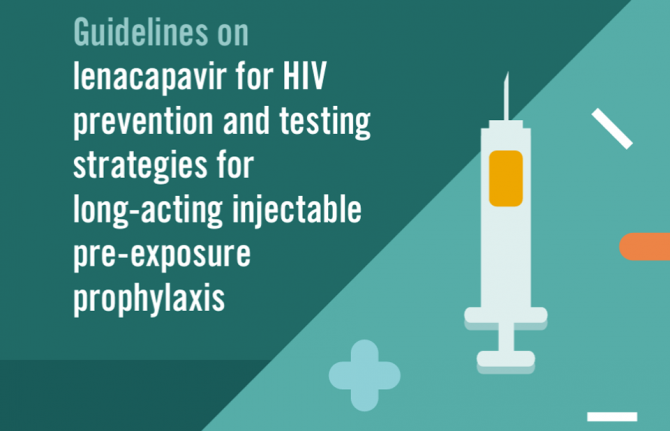 UNAIDS welcomes new WHO guidelines on Lenacapavir
UNAIDS welcomes new WHO guidelines on Lenacapavir

15 July 2025
 “Who will protect our young people?”
“Who will protect our young people?”

02 June 2025


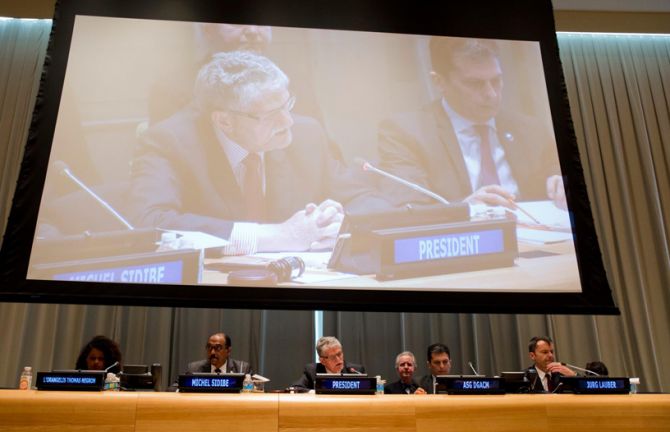
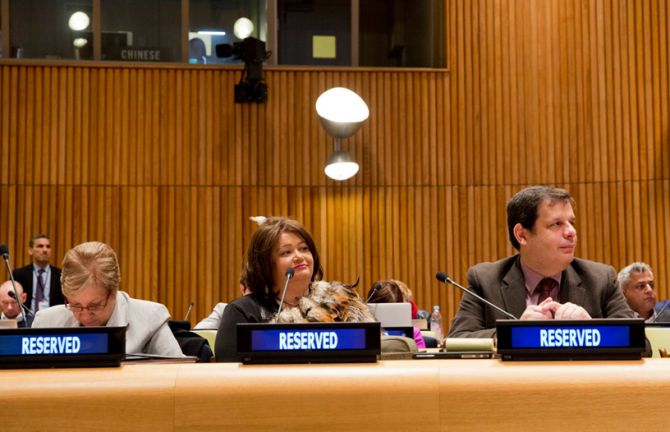

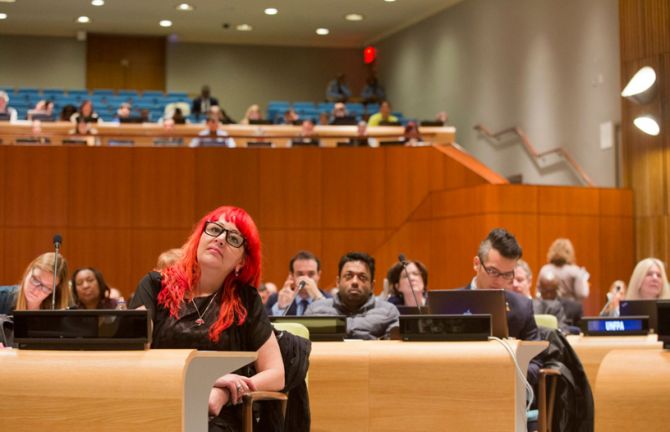
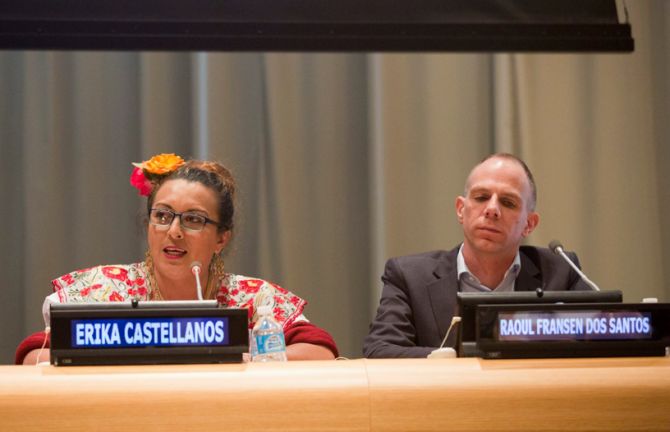
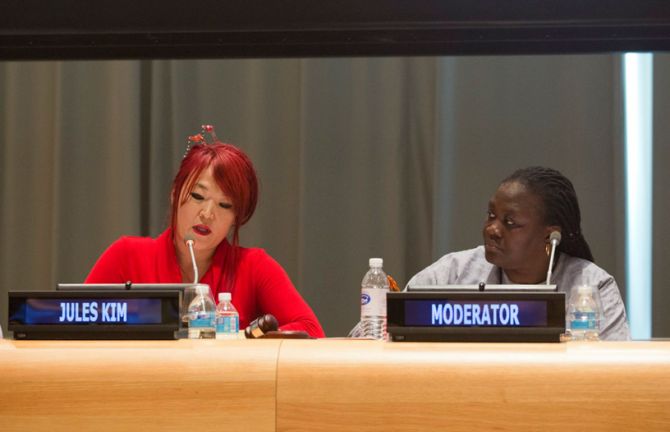
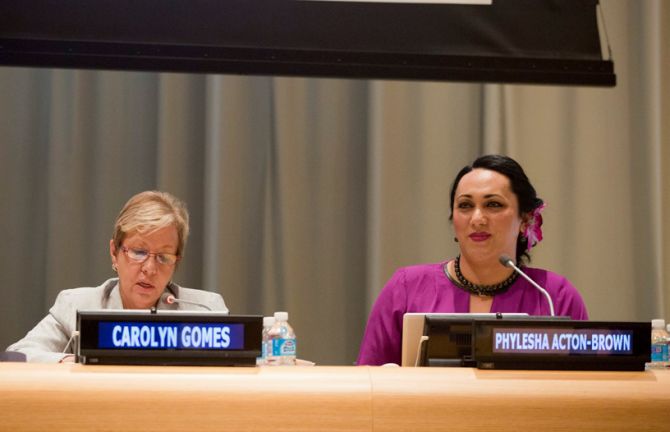

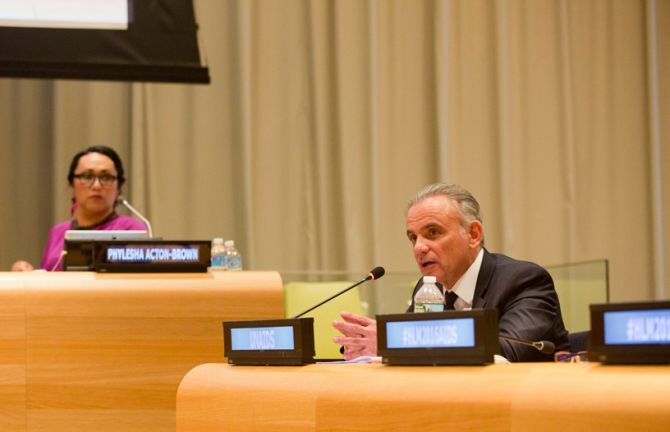

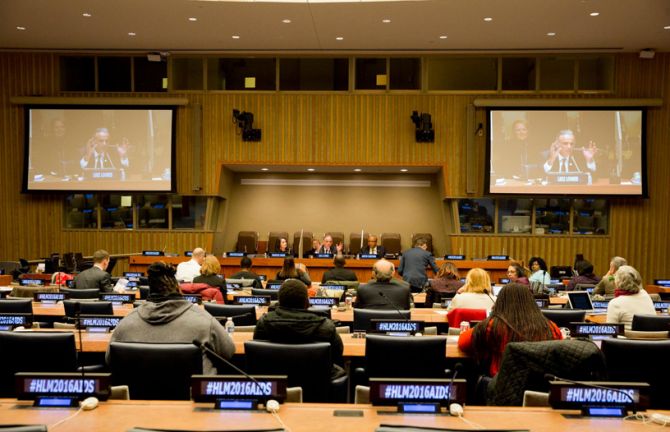
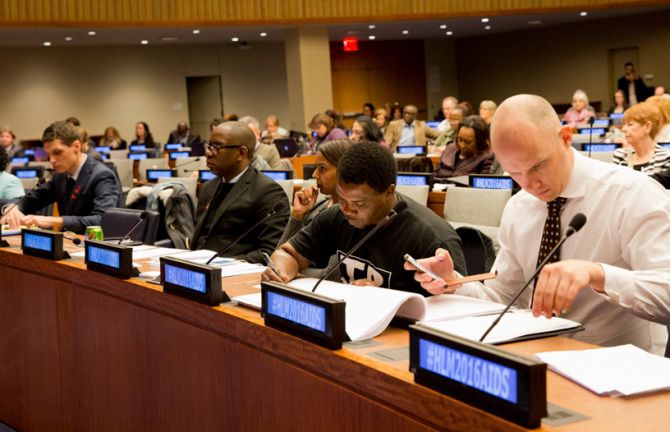
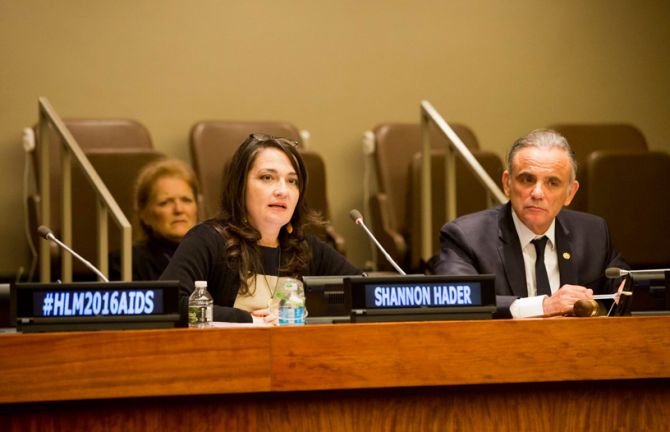

Press Release
Investing in community-led action will be critical to ending the AIDS epidemic
06 April 2016 06 April 2016Civil society urges United Nations Member States to include financing, services and rights commitments as priorities in the 2016 Political Declaration on Ending AIDS
NEW YORK, 6 April 2016—At the Informal Interactive Civil Society Hearing on HIV, civil society organizations have called on United Nations Member States and partners to ensure that the response to HIV is fully funded and that financing for community-led action is increased significantly over the next few years. They also called for 30 million people to have access to life-saving HIV treatment by 2020 and for ambitious HIV prevention targets to be met.
The hearing, convened at the United Nations Headquarters in New York, United States of America, by the President of the United Nations General Assembly, is part of the groundwork for the United Nations General Assembly High-Level Meeting on Ending AIDS, which will take place from 8 to 10 June 2016 in New York. The hearing provides an opportunity for civil society organizations to fully contribute to the preparations, to ensure that their voices are heard and that their interests are reflected, and that their recommendations are taken forward in the drafting of the new Political Declaration on Ending AIDS.
“We are aligned in our objectives of ending the AIDS epidemic by 2030,” said Mogens Lykketoft, President of the United Nations General Assembly. “Now we must work together to ensure a strong Political Declaration on Ending AIDS with clear targets that will lead the world to ending the AIDS epidemic as part of the Sustainable Development Goals.”
Representatives of civil society emphasised the need to reach the people most affected by HIV, who continue to be left behind in the AIDS response including sex workers, men who have sex with men, transgender people and people who inject drugs. The representatives also discussed the importance of ensuring a rights-based approach that is inclusive, based on evidence and people-centred during the interactive panel discussions with Member States.
“To end the AIDS epidemic, no one can be left behind,” said Michel Sidibé, Executive Director of UNAIDS. “Civil society advocacy, engagement and service delivery will play a critical role in translating the targets of the Political Declaration on Ending AIDS into real action on the ground to reach even the most marginalized people with life-saving HIV services.”
Community efforts have proven to be essential in overcoming many of the major challenges in the AIDS response, including reaching people most affected by HIV with life-changing HIV services, providing support to help people adhere to their treatment and bolstering other essential health services. Civil society engagement has also been critical in advocating for new resources, improving HIV programming and making progress on human rights issues.
“The cost of inaction is extremely high,” said Marama Pala, of the International Indigenous Working Group on HIV/AIDS and Co-Chair of the Stakeholder Task Force. “Individual communities are where the work gets done. There is no ending AIDS without us.”
UNAIDS estimates that US$ 26.2 billion will be needed for the AIDS response in low- and middle-income countries in 2020—up from the US$ 19.2 billion available in 2014. UNAIDS also underlines that greater investment in civil society advocacy and community-based service delivery will be critical.
By 2020, UNAIDS estimates that investment in community mobilization needs to increase threefold, to 3% of total HIV resources in low- and middle-income countries. Outreach to key populations in low- and middle-income countries is estimated to need to grow to about 7.2% of total HIV investments by 2020, and the estimated resource needs for community-based delivery of antiretroviral therapy need to increase to about 3.8% of total investment for HIV.
The Informal Interactive Civil Society Hearing on HIV included representatives of nongovernmental organizations, the private sector, organizations and networks representing people living with HIV, women, adolescents and young people, and other stakeholders.
UNAIDS
The Joint United Nations Programme on HIV/AIDS (UNAIDS) leads and inspires the world to achieve its shared vision of zero new HIV infections, zero discrimination and zero AIDS-related deaths. UNAIDS unites the efforts of 11 UN organizations—UNHCR, UNICEF, WFP, UNDP, UNFPA, UNODC, UN Women, ILO, UNESCO, WHO and the World Bank—and works closely with global and national partners towards ending the AIDS epidemic by 2030 as part of the Sustainable Development Goals. Learn more at unaids.org and connect with us on Facebook, Twitter, Instagram and YouTube.
Downloads
Press centre
Download the printable version (PDF)
Documents
2016 HLM ad banner
Related
High-Level Meeting on Ending AIDS
16 June 2016
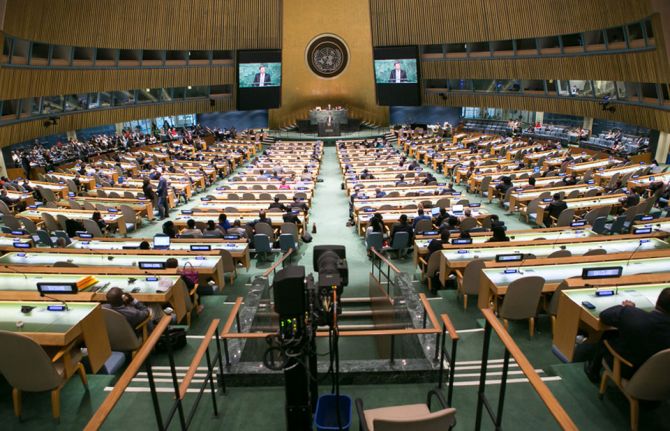 Bold commitments to action made at the United Nations General Assembly High-Level Meeting on Ending AIDS
Bold commitments to action made at the United Nations General Assembly High-Level Meeting on Ending AIDS

10 June 2016
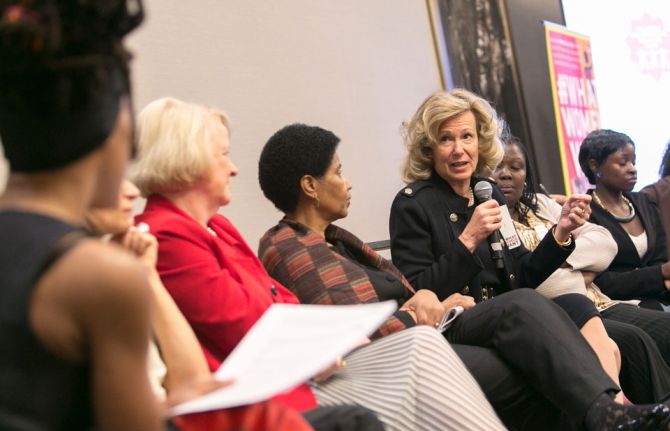 Global HIV advocates gather to discuss #whatwomenwant in the next phase of the response to HIV
Global HIV advocates gather to discuss #whatwomenwant in the next phase of the response to HIV

10 June 2016
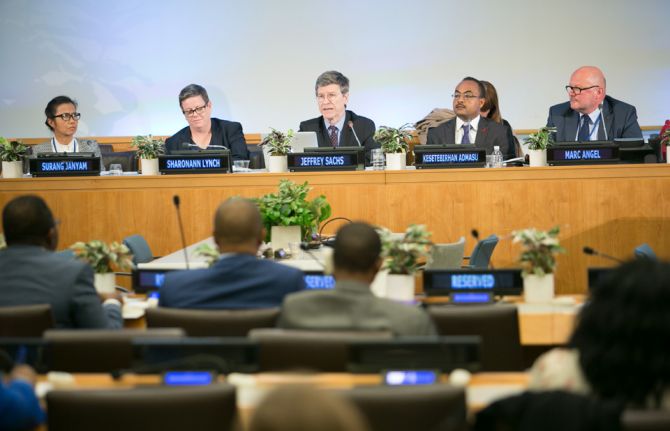 Urgent need to strengthen community health systems to achieve the 90–90–90 treatment target
Urgent need to strengthen community health systems to achieve the 90–90–90 treatment target

10 June 2016
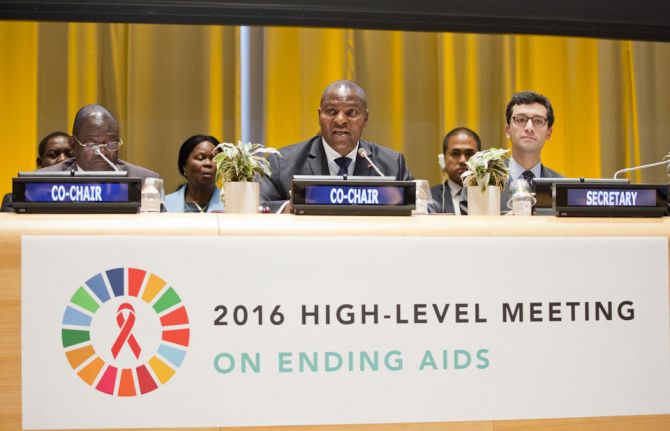 Leaving no one behind: ending stigma and discrimination through social justice and inclusive societies
Leaving no one behind: ending stigma and discrimination through social justice and inclusive societies

09 June 2016

